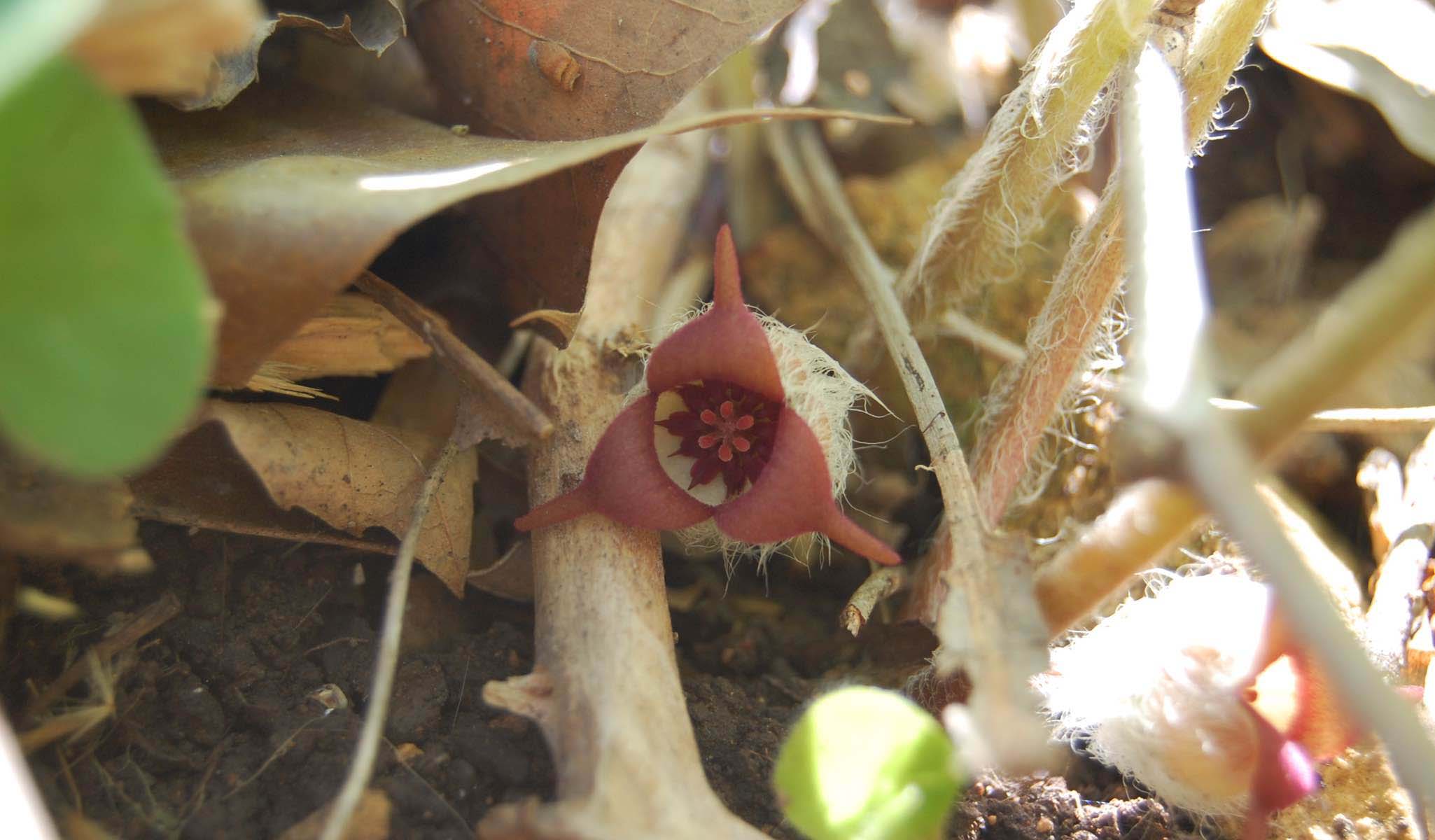Wild Ginger

Common Name:
Wild GingerBotanical Name:
Asarum canadenseFamily:
AristolochiaceaeZone:
3-8Height:
6-8"Spread:
12-16"Bloom Time:
April, MarchBloom Description:
The maroon flowers nestle on the ground in early spring and can only be properly enjoyed by lying on the forest floor with it. The flowers are 1" in diameter and resemble little brown jugs that have been knocked over on the ground.Trail/Garden Location:
Art Trail, Rock Ledge Trail, Tulip Tree TrailGarden Uses:
Wild Ginger is a perfect choice for a native groundcover. It likes dappled sun to full shade with moist, well-drained soil. As the colony spreads, it forms a lush green carpet that compliments any woodland garden.Wildlife Benefits:
Provides shelter for small mammals and amphibians. Ants eat a fleshy substance, known as an elaiosome, off the seeds and help distribute the seeds when taken back to the colony.Leaf Type:
The heart-shaped, dark-green leaves are the main attraction for this woodland wildflower. They vary in size from 3-6" in diameter.Further Information:
WILD GINGER TRANSCRIPT
NARRATOR: Wild ginger has a rich history of uses from culinary to medicinal to spiritual. Ethnobotanist Justin Nolan details some of the ways this versatile native plant has been utilized by a number of Native American tribes.
JUSTIN NOLAN: Wild ginger, Asarum canadense. This is a member of the birthwort family. It’s a low growing perennial with a host of cultural uses. Genetically, wild ginger is fairly unrelated to true ginger, which is a native of Southern China, although the two do share similar aromatic qualities. Wild ginger in North America forms the base of numerous cold, cough and sore throat remedies in Native American medicine. The plant is often cited as an effective treatment against tuberculosis, typhoid, and scarlet fever. Wild ginger preparations are known to promote digestion, to ease anxiety and to relax children who suffered from nightmares. Ranging in distribution from the plain states to the Atlantic, wild ginger was incorporated extensively in various Native North American food preparation customs, given it’s a spicy and zesty flavor. Wild ginger root was applied when roasting the gamiest tasting meats, rendering them more pleasant to the palate.
Wild ginger has wide application beyond food and medicine as the Iroquois, for example, believe that the plant could ward away lingering ghosts and spirits. And as such, they valued it accordingly as a powerful charm. Like bloodroot, wild ginger favors rich, shady soils and provides an excellent, pleasant-smelling ground cover for shade gardens.
